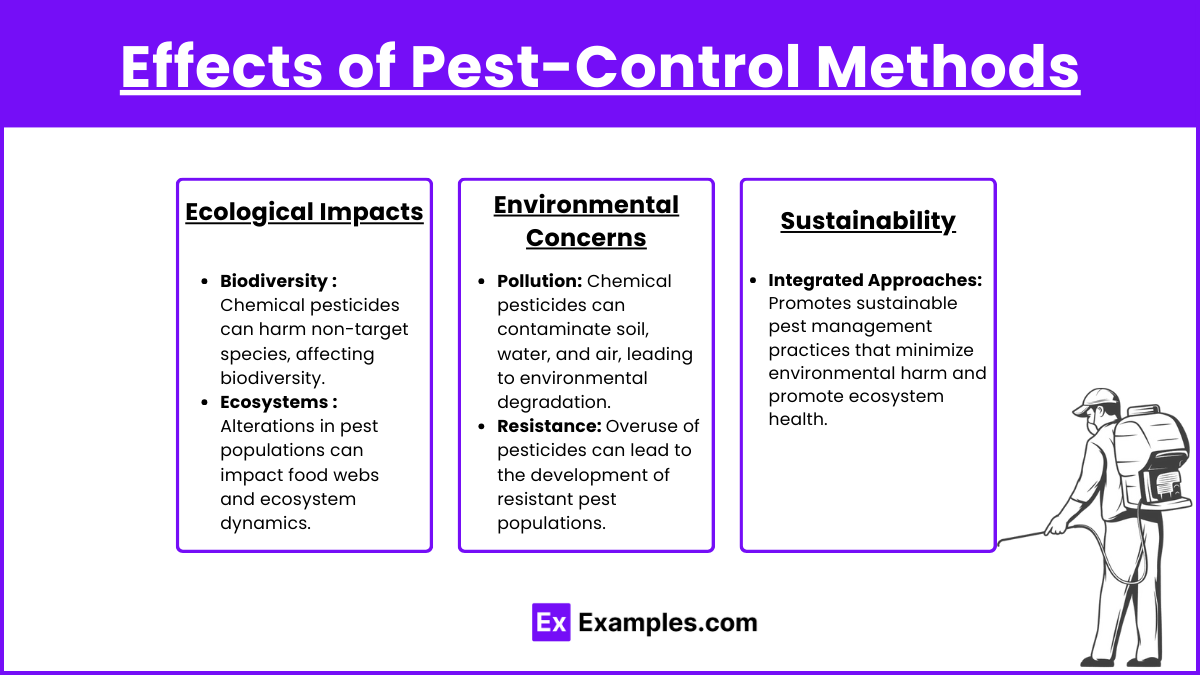The Best Strategy To Use For Pestwise
Table of ContentsMore About PestwiseHow Pestwise can Save You Time, Stress, and Money.The Only Guide to PestwiseWhat Does Pestwise Do?The smart Trick of Pestwise That Nobody is Talking AboutThe Main Principles Of Pestwise 10 Easy Facts About Pestwise Explained

Q. Define "incorporated bug management" (IPM) and checklist a number of feasible control techniques that may be made use of in an IPM technique. A. Integrated pest monitoring is the combining of ideal parasite control strategies into a solitary plan to minimize pests and their damages to an acceptable level. Parasite control techniques might include: host resistance, organic control, cultural control, mechanical control, cleanliness, and chemical (chemical) control.
How Pestwise can Save You Time, Stress, and Money.
What can you do to maintain the parasites you are trying to control from ending up being immune to the chemicals you use? A. Insect resistance can be minimized by making use of incorporated pest administration and turning the sorts of chemicals made use of.
Pests are a vital hazard to the farming organization, and integrated pest management helps cultivators address and alleviate these dangers. Integrated bug monitoring makes use of numerous approaches in facility, hence being a more effective service to the issue. Mosquito Control. Specifically, removing hostile chemical techniques enables for lessening damage to people and the environment by using natural and more secure alternatives rather
The 10-Second Trick For Pestwise
The goal of incorporated pest management is to decrease this damage and control acceptable problem levels instead than remove all undesired populaces. This is why it is crucial to understand what actions are justified in each instance and use hostile ones only when various other integrated monitoring methods do not work. Integrated monitoring alleviates the negative repercussions of a non-IPM approach, and the primary advantages of IPM Perks of IPM.
A correct understanding of the invasion extent establishes if the problem must be addressed. are the following parts of an IPM program since it is vital to realize if the microorganisms make possible risks and make a decision on the incorporated management choices or the specific pesticide use. plan to reduce invasions by using various agronomic techniques.
Fascination About Pestwise
Integrated management options in an IPM program beginning with much safer to more hostile ones. The prior incorporated administration aspects aid recognize exactly how to plan and implement an IPM program action by action: Screen your crops regularly.

Among others, IPM cultural approaches include the complying with area administration strategies: dirt treatment; choice of suitable plants; plant rotation; interplanting or strip chopping; choice of growing dates; weed control; use of trap plants. Favorable dirt conditions speed up plant growth, and energetic plants are more immune to invasions. Healthy and balanced seedlings and seeds determine effective plant development, so it is crucial to pick pest-free growing product with solid roots.
Thus, among various other applications, crop turning can be efficiently utilized as an incorporated pest monitoring method. Vermin spread out slower if rows of different crop kinds divide their host plants in intercropping or strip chopping, which is additionally made use of in the incorporated parasite monitoring system. Conversely, infestations increase when plants of the same crop kind or family members expand with each other.
, as well as tomatoes. Growing trap plants in patches is an additional alternative for IPM intercropping. This integrated insect management approach recommends drawing in bugs to details plants and then controlling them with chemical or mechanical strategies.
What Does Pestwise Do?
Barriers are common instances of physical IPM approaches. Mature bugs or their eggs and larvae are accumulated by hand and destroyed.

Department of Plant Sciences. College of Missouri. Dirt solarization is an effective integrated administration strategy to disinfect the area by heating it in an all-natural means. This integrated management technique suggests an usual way of destroying bugs by killers, parasitoids, virus, and various other biological control agents (aka antagonistic organisms). The function of organic control in IPM is to.
5 Simple Techniques For Pestwise
With time, their population became an actual annoyance to farmers together with indigenous kangaroos or dingoes. The cane toad is an additional instance showing integrated organic control failing in this regard when it refused to quest the target types and became a parasite itself. Parasitoids create on or within their hosts to ultimately kill them after growing.